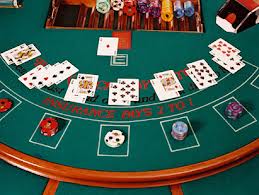
Keeping Count: How to guide on how to count cards
If you’re a serious blackjack player, there’s a good chance you’ve either thought about, or legitimately attempted to count cards at a Casino. This is a common strategy amongst blackjack players, and we’ve seen this strategy glorified in movies such as “21” and “The Last Casino”. However, being able to keep count of where the deck is at, while negotiating through all the distractions of a casino can prove to be an onerous task. We’ll take you through some of the basic steps to help you count cards to give your blackjack game an added boost.
Why would someone count cards?
The key of card counting is to keep track of the Aces and 10’s that are in the deck. Theoretically, Aces and 10’s (10 and any face card) will give the player an advantage over the dealer. In turn, the lower cards (4s, 5s, and 6s) will benefit the dealer. House rules require a dealer to hit on a stiff 12-16, so knowing that a deck is loaded with 10’s can provide the player with an advantage knowing the dealer may be forced into a bust.
The goal of any card counter is to determine the Effect of Removal (EOR). The EOR will determine the house odds for each new hand, and will provide the player with an advantage by having an idea as to what type of cards will come out next and what the dealer may draw for himself.
How does someone go about counting cards?
Don’t worry; you don’t need a math degree to count cards. However, you do need to master a system. The most common system is the “Hi-Lo” counting system, which is also referred to as a “single level” counting method. This system requires the player to +1 every time a 2-6 is played, and -1 every time a 10 (10, J, Q, K) or an Ace is played (7-9 is given no count). The reasoning behind this is that low cards will increase the count as they increase the percentage of high cards remaining in the deck. In turn, high cards will naturally decrease the percentages.
Are there any other systems?
There are other card counting systems that require the player to take on more math that fall under the “high risk, high reward” category. While some systems, such as “The Wong Halves” or “Red Seven” offer better detail for a card counter, the player must take on more math and keep track of whole and half numbers. This can make it tricky for a player to manage their current hand, while attempting to stay ahead of the house.
A full list of systems and how they work can be seen here: http://www.qfit.com/card-counting.htm
Back-counting
This strategy is also known as “Wonging” and can be practiced at any casino. As the name suggests, you stand behind the players who are involved in a blackjack game, and begin to count the cards as they are dealt. When the deck begins to load up on a high count, you sit down and join in on the game. This system works both ways, as you can leave a game you’re in when the count gets too low. Back-counting only works when the house users multiple decks (4 or more), which is the typical case for a blackjack game at major casinos.
While the advantages are obvious, the player must note that this type of strategy can bring unwanted attention from casino staff. Remember, once you’re labeled a card counter, there’s no shedding that label.
Wagering
Once you’ve practiced your card counting and you have your system down pat, the final step is maximizing your money. You will want to have your base bet when you begin, and adjust off of that when the deck gets hot or cold. Some theories suggest not betting at all when you get to a negative count, and in turn, ramping up your bet significantly when the count is in your favor. Back-counting will help in this regard, as you’ll be entering a game when the deck loaded and leaving when the count has fallen below zero.

















